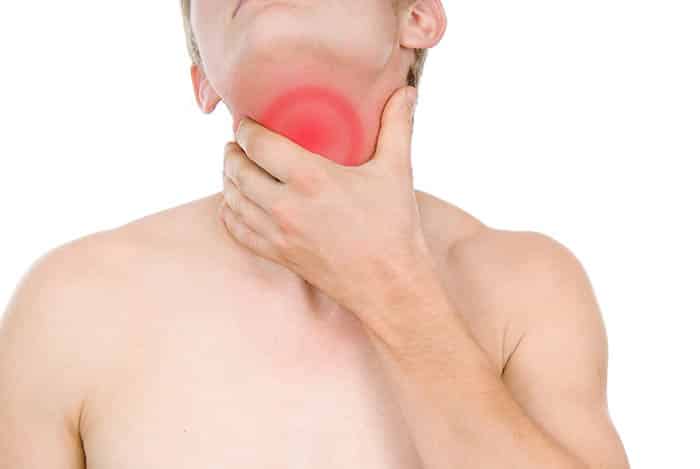Hashimoto's thyroiditis
Last updated 11/05/2020 by The pain clinics - Interdisciplinary Health
Hashimoto's thyroiditis
Hashimoto's thyroiditis is an autoimmune disease in which the thyroid gland is attacked by the body's own antibodies that cause hypothyroidism (low metabolism). This diagnosis is the most common cause of low metabolism and impaired thyroid function (hypothyroidism). Hashimoto's thyroiditis was also the first diagnosis to be classified as an autoimmune disease. The condition was first described by Japanese Hakaru Hashimoto in a journal published in Germany in 1912.
Also read: - Dry Eyes? This You Should Know About Sjøgrens Disease
More focus should be placed on research aimed at a condition that affects so many - that is why we encourage you to share this article in social media, preferably via our Facebook page and say: "Yes to more research on metabolic disorders". Feel free to comment at the bottom of this article if there is anything else you are wondering about - or if there is something you want us to add.
Symptoms of Hashimoto's thyroiditis
Some of the most common symptoms are fatigue, weight gain, pale / swollen face, "lethargy", depression, dry skin, feeling cold, joint and muscle pain, constipation, dry and thinning hair, heavy menstruation and irregular menstrual periods.
But it is also the case that there can be many different symptoms of this diagnosis and that they can often overlap with other diseases - and none of the symptoms we mentioned above are exclusive to Hashimotos.
More rare symptoms may include:
- Swelling of feet
- Diffuse pain and pain
- Reduced concentration
By worsening the diagnosis one can also experience:
- Swelling around the eyes
- Reduced heart rate
- Reduced body temperature
- Heart failure
Clinical signs
The thyroid gland may become enlarged and hard, but in some cases it may be impossible to know these changes. Enlargement of the gland occurs due to lymphatic infiltration and fibrosis (damage to the thyroid structure).
Diagnosis and clinical examination

The diagnosis of Hashimoto's thyroiditis is divided into a functional and a medical examination.
Functional examination: The usual examination that the doctor suspects of damaged thyroid gland is by physical examination and the clinician is aware of the hands on the front of your neck. The thyroid gland can in some cases be experienced as enlarged, pressure-cured and harder than normal.
Medical examination: The diagnosis is made by a blood test. A positive blood test will show elevated blood pressure and increased levels of the antibody TPOAb (anti-thyroid peroxidase antibodies). The levels of TSH, T3, thyroxine (T4), anti-Tg and anti-TPO are also tested - where an overall evaluation of these can help to make a specific diagnosis. Due to relatively non-specific symptoms, Hashimoto's thyroiditis is often misdiagnosed as depression, ME, chronic fatigue syndrome, Fibromyalgia or anxiety. In some cases, it may also be necessary to undergo a biopsy to find out what is affecting the thyroid gland.
Why do you get Hashimoto's thyroiditis?
In Hashimoto's disease, the body's own immune system attacks the cells in the thyroid gland due to "mislabeling" - that is, the white blood cells think that these cells are hostile and thus begin to fight and destroy them. Naturally, this is not particularly favorable and sets in motion a fierce battle in which the body plays on both teams - both what is in defense and what is attacking. Such processes also require a lot of energy and for the person affected, it can often be experienced as a long-term inflammation in the body.
Who is affected by the disease?

Hashimoto's thyroiditis occurs more often in women than men (7: 1). The condition can occur in adolescence among younger women, but it is most common that it occurs later than this - especially among men. People who develop Hashimoto's often have a family history of the condition or other autoimmune diseases.
Affected? Join the Facebook group «Rheumatism and Chronic Pain - Norway: Research and news»For the latest updates on research and media writing about this disorder. Here, members can also get help and support - at all times of the day - through the exchange of their own experiences and advice.
Treatment
Treatment of hypothyroidism naturally includes sufficient administration of thyroxine-stimulating drugs to stabilize thyroxine levels. Patients who have been diagnosed with hypothyroidism typically need to take levothyroxine (Levaxin) daily - for the rest of their lives. Such treatment will also prevent further enlargement and damage to the thyroid gland in the vast majority of cases. We point out, however, that there is a certain group of patients who cannot use synthetic medicine. Many of these benefit from what is known as biological medicine (such as NDT).
NEXT PAGE: - Complete overview of autoimmune diseases
Also read: What You Should Know About Rheumatism
Feel free to share in social media
Again, we want to ask nicely to share this article in social media or via your blog (please link directly to the article). Understanding and increased focus is the first step towards a better everyday life for those affected by chronic disorders such as this one.
Suggestion:
Option A: Share directly on FB - Copy the website address and paste it into your facebook page or in a relevant facebook group you are a member of.
Option B: Link directly to the article on your blog or website (if you have one).
NEXT PAGE: - This you should know about FIBROMYALGIA
 Follow Vondt.net on YOUTUBE
Follow Vondt.net on YOUTUBE
(Follow and comment if you want us to make a video with specific exercises or elaborations for exactly YOUR issues)
 Follow Vondt.net on FACEBOOK
Follow Vondt.net on FACEBOOK
(We try to respond to all messages and questions within 24-48 hours. We can also help you interpret MRI responses and the like.)










Leave a reply
Want to join the discussion?Feel free to Contribute!